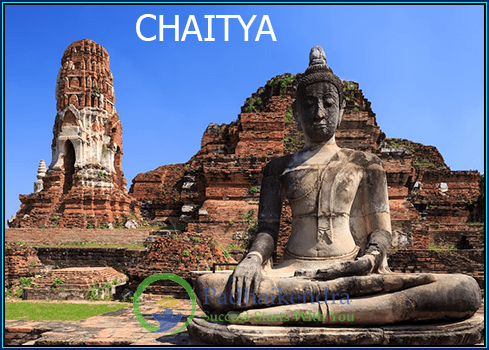Meaning of the term Chaitya used during ancient India
Chaitya is a term used in ancient India that refers to a type of sacred space or shrine in Buddhism. The term “Chaitya” is derived from the Sanskrit word “chit,” which means “consciousness” or “perception.”
Chaityas were important places of worship and pilgrimage for Buddhists in ancient India, and were used for a variety of religious purposes. They were typically constructed as large, dome-shaped structures with a circular or horseshoe-shaped floor plan.
Chaityas were typically built into natural caves or carved out of solid rock, and were often decorated with elaborate carvings and sculptures. The interior of a Chaitya typically contained a central aisle or nave, flanked by two rows of pillars, which led to a large, semi-circular apse at the far end of the shrine. This apse contained a stupa or other sacred object, which was the focus of the worship and devotion of the faithful.
Chaityas were used for a variety of religious practices in ancient India, including meditation, prayer, and ritual offerings. They were also important places of pilgrimage, and many Buddhists would travel long distances to visit famous Chaityas such as the Ajanta Caves or the Ellora Caves.
Chaityas were an important part of the Buddhist religious landscape in ancient India, and continue to be revered by Buddhists today. Many ancient Chaityas have been preserved as important cultural and religious sites, and are visited by thousands of pilgrims and tourists every year.

